| Unit 1: Some Basic Concepts of Chemistry | Matter and Its Nature, Dalton’s Atomic Theory;
Concept of Atom, Molecule, Element and Compound;
Physical Quantities and Their Measurements in Chemistry, Precision and Accuracy, Significant Figures, S.I. Units, Dimensional Analysis;
Laws of Chemical Combination: Atomic and Molecular Masses, Mole Concept, Molar Mass, Percentage Composition, Empirical and Molecular Formulae; Chemical Equations and Stoichiometry. |
| Unit 2: States of Matter | Classification of Matter Into Solid, Liquid and Gaseous States.
Gaseous State:- Measurable Properties of Gases;
Gas Laws – Boyle’s Law, Charle’s Law, Graham’s Law of Diffusion, Avogadro’s Law, Dalton’s Law of Partial Pressure;
Concept of Absolute Scale of Temperature;
Ideal Gas Equation;
Kinetic Theory of Gases (Only Postulates);
Concept of Average, Root Mean Square and Most Probable Velocities;
Real Gases, Deviation From Ideal Behaviour, Compressibility Factor and Van Der Waals Equation.
Solid State:- Classification of Solids: Molecular, Ionic, Covalent and Metallic Solids, Amorphous and Crystalline Solids (Elementary Idea);
Bragg’s Law and Its Applications; Unit Cell and Lattices, Packing in Solids (Fee, Bec and Hep Lattices), Voids, Calculations Involving Unit Cell Parameters, an Imperfection in Solids; Electrical and Magnetic Properties.
Liquid State:- Properties of Liquids – Vapour Pressure, Viscosity and Surface Tension and Effect of Temperature on Them (Qualitative Treatment Only). |
| Unit 3: Atomic Structure | Thomson and Rutherford Atomic Models and Their Limitations;
Nature of Electromagnetic Radiation, Photoelectric Effect;
The spectrum of Hydrogen Atom, Bohr Model of Hydrogen Atom – Its Postulates, Derivation of the Relations for Energy of the Electron and Radii of the Different Orbits, Limitations of Bohr’s Model;
Dual Nature of Matter, De-broglie’s Relationship, Heisenberg Uncertainty Principle. Elementary Ideas of Quantum Mechanics, Quantum Mechanical Model of Atom, Its Important Features. Concept of Atomic Orbitals as One Electron Wave Functions;
Variation of T|/ And |/2 With R for Is and 2S Orbitals; Various Quantum Numbers (Principal, Angular Momentum and Magnetic Quantum Numbers) And Their Significance; Shapes of S, P and D – Orbitals, Electron Spin and Spin Quantum Number;
Rules for Filling Electrons in Orbitals – Aufbau Principle, Pauli’s Exclusion Principle and Hund’s Rule, Electronic Configuration of Elements, Extra Stability of Half-filled and Completely Filled Orbitals. |
| Unit 4: Chemical Bonding and Molecular Structure | Covalent Bonding: Concept of Electronegativity, Fajan’s Rule, Dipole Moment; Valence Shell Electron Pair Repulsion (VSEPR) Theory and Shapes of Simple Molecules.
Kossel – Lewis Approach to Chemical Bond Formation, the Concept of Ionic and Covalent Bonds.
Ionic Bonding: Formation of Ionic Bonds, Factors Affecting the Formation of Ionic Bonds, Calculation of Lattice Enthalpy.
Quantum Mechanical Approach to Covalent Bonding:
Valence Bond Theory – Its Important Features, the Concept of Hybridization Involving S, P and D Orbitals; Resonance.
Molecular Orbital Theory – Its Important Features, Lcaos, Types of Molecular Orbitals (Bonding, Antibonding), Sigma and Pi-bonds, Molecular Orbital Electronic Configurations of Homonuclear Diatomic Molecules, the Concept of Bond Order, Bond Length and Bond Energy.
Elementary Idea of Metallic Bonding. Hydrogen Bonding and Its Applications. |
| Unit 5: Chemical Thermodynamics | Fundamentals of Thermodynamics: System and Surroundings, Extensive and Intensive Properties, State Functions, Types of Processes.
First Law of Thermodynamics – Concept of Work, Heat Internal Energy and Enthalpy, Heat Capacity, Molar Heat Capacity; Hess’s Law of Constant Heat Summation;
Enthalpies of Bond Dissociation, Combustion, Formation, Atomization, Sublimation, Phase Transition, Hydration, Ionization and Solution.
Second Law of Thermodynamics: Spontaneity of Processes; As of the Universe and AG of the System as Criteria for Spontaneity, AG” (Standard Gibbs Energy Change) And Equilibrium Constant. |
| Unit 6: Solutions | Colligative Properties of Dilute Solutions – The Relative Lowering of Vapour Pressure, Depression ofzing Point, the Elevation of Boiling Point and Osmotic Pressure; Determination of Molecular Mass Using Colligative Properties;
Different Methods for Expressing the Concentration of Solution – Molality, Molarity, Mole Fraction, Percentage (By Volume and Mass Both), the Vapour Pressure of Solutions and Raoult’s Law – Ideal and Non-ideal Solutions, Vapour Pressure – Composition, Plots for Ideal and Non-ideal Solutions;
Abnormal Value of Molar Mass, Van’t Hoff Factor and Its Significance. |
| Unit 7: Equilibrium | Meaning of Equilibrium, the Concept of Dynamic Equilibrium.
Equilibria Involving Physical Processes: Solid-liquid, Liquid – Gas and Solid-gas Equilibria, Henry’s Law, General Characteristics of Equilibrium Involving Physical Processes.
Ionic Equilibrium: Weak and Strong Electrolytes, Ionization of Electrolytes, Various Concepts of Acids and Bases (Arrhenius, Bronsted – Lowry and Lewis) And Their Ionization, Acid-Base Equilibria (Including Multistage Ionization) And Ionization Constants, Ionization of Water, PH Scale, Common Ion Effect, Hydrolysis of Salts and PH of Their Solutions, Solubility of Sparingly Soluble Salts and Solubility Products, Buffer Solutions.
Equilibria Involving Chemical Processes: Law of Chemical Equilibrium, Equilibrium Constants (KP and Kc) And Their Significance, Significance of AG and AG” in Chemical Equilibria, Factors Affecting Equilibrium Concentration, Pressure, Temperature, Effect of Catalyst; Le Chatelier’s Principle. |
| Unit 8: Redox Reactions and Electrochemistry | Electronic Concepts of Oxidation and Reduction, Redox Reactions, Oxidation Number, Rules for Assigning Oxidation Number, Balancing of Redox Reactions.
Electrolytic and Metallic Conduction, Conductance in Electrolytic Solutions, Molar Conductivities and Their Variation With Concentration: Kohlrausch’s Law and Its Applications.
Nernst Equation and Its Applications; Relationship Between Cell Potential and Gibbs’ Energy Change; Dry Cell and Lead Accumulator; Fuel Cells.
Electrochemical Cells – Electrolytic and Galvanic Cells, Different Types of Electrodes, Electrode Potentials Including Standard Electrode Potential, Half – Cell and Cell Reactions, Emf of a Galvanic Cell and Its Measurement. |
| Unit 9: Chemical Kinetics | Rate of a Chemical Reaction, Factors Affecting the Rate of Reactions: Concentration, Temperature, Pressure and Catalyst;
Elementary and Complex Reactions, Order and Molecularity of Reactions, Rate Law, Rate Constant and Its Units, Differential and Integral Forms of Zero and First Order Reactions, Their Characteristics and Half -Lives, Effect of Temperature on the Rate of Reactions -Arrhenius Theory, Activation Energy and Its Calculation, Collision Theory of Bimolecular Gaseous Reactions (No Derivation). |
| Unit 10: Surface Chemistry | Colloidal State- Distinction Among True Solutions, Colloids and Suspensions, Classification of Colloids -Lyophilic, Lyophobic; Multimolecular, Macromolecular and Associated Colloids (Micelles), Preparation and Properties of Colloids – Tyndall Effect, Brownian Movement, Electrophoresis, Dialysis, Coagulation and Flocculation; Emulsions and Their Characteristics.
Catalysis – Homogeneous and Heterogeneous, Activity and Selectivity of Solid Catalysts, Enzyme Catalysis and Its Mechanism.
Adsorption- Physisorption and Chemisorption and Their Characteristics, Factors Affecting Adsorption of Gases on Solids – Freundlich and Langmuir Adsorption Isotherms, Adsorption From Solutions. |








































